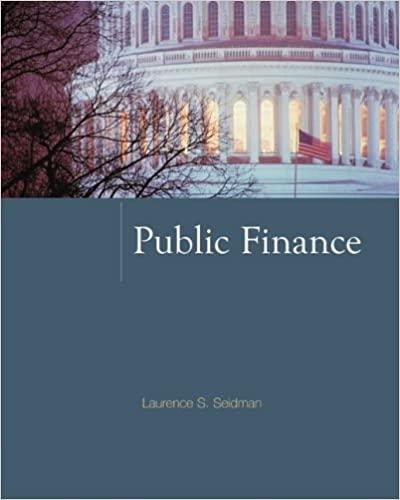Question
The (-Select- A. discount B. premium C. par) value of a bond is its stated face value or maturity value, and its coupon interest rate
The (-Select- A. discount B. premium C. par) value of a bond is its stated face value or maturity value, and its coupon interest rate is the stated annual interest rate on the bond. The maturity date is the date on which the par value must be repaid. A (-Select- A. call B. redemption C. sinking) provision gives the issuer the right to redeem the bonds under specified terms prior to their normal maturity date, although not all bonds have this provision. Some bonds have (-Select- A. redemption fund B. sinking fund C. call fund) provisions which require the issuer to systematically retire a portion of the bond issue each year. Because sinking fund provisions facilitate their orderly retirement, bonds with these provisions are regarded as being (-Select-A. riskier B. safer C. equivalent) so they will have (-Select- A. lower B. equivalent C. higher) coupon rates than similar bonds without these provisions. Bonds can be (-Select- A. floating B. zero C. fixed) -rate bonds with a constant coupon rate over the life of the bond, or they can be (-Select- A. floating B. zero C. fixed) -rate bonds with a coupon rate that varies over time depending on the level of interest rates. (-Select- A. Annual coupon B. Zero coupon C. Fixed coupon) bonds pay no annual interest but are sold at a (-Select- A. premium above B. price at C. discount below) par, thus compensating investors in the form of capital appreciation. An original issue discount (OID) bond is any bond originally offered at a price (-Select- A. above its B. below its C. equal to) par value. (-Select- A. Convertible B. Perpetual C. Putable) bonds are exchangeable at the option of the holder for the issuing firm's common stock. Bonds can be issued with warrants giving the holder the option to purchase the firm's stock for a stated price, thereby providing a capital gain if the stock's price rises. (-Select- A. Income B. Convertible C. Putable) bonds contain a provision that allows holders to sell them back to the company prior to maturity at a prearranged price. (-Select- A. Income B. Default C. Preferred) bonds pay interest only if the firm has earnings, while an indexed (purchasing power) bond bases interest payments on an inflation index to protect the holder from inflation. Mortgage bonds are backed by (-Select- A. current assets B. fixed assets C. marketable securities) . First mortgage bonds are senior in priority to claims of second mortgage bonds. Debentures are long-term bonds that are not secured by a mortgage. Subordinated debentures are bonds having claims on assets only after senior debt has been paid in full in the event of liquidation. (-Select- A. Secured-debenture B. Investment-grade) bonds are rated triple B or higher, and many banks and other institutional investors are legally limited to only holding these bonds. In contrast, junk bonds are high-risk, high-yield bonds.
Step by Step Solution
There are 3 Steps involved in it
Step: 1

Get Instant Access to Expert-Tailored Solutions
See step-by-step solutions with expert insights and AI powered tools for academic success
Step: 2

Step: 3

Ace Your Homework with AI
Get the answers you need in no time with our AI-driven, step-by-step assistance
Get Started


